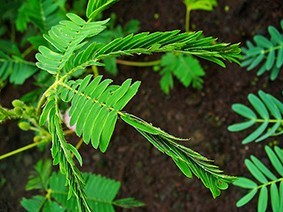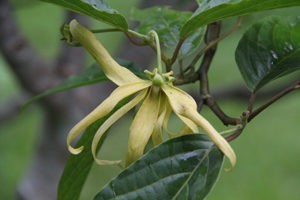Yes, really. This might sound like a bit of an outlandish statement, but when you give it some thought you’ll realise it’s not quite so “out there” after all. For example, you’ve surely noticed that some flowers open during the day and close up at night, or only smell at certain times ie. only at night. Most people don’t give these things much thought, any more than they think about why the sky is blue or the sun is hot.
However, curious scientists have put a fair few research hours into understanding how plants tell the time and what drives their internal clocks. It would seem to be a reasonable assumption that they are responding to changes in light and temperature throughout the Earth’s ~24 hour rotation around the sun. However, it seems that the clock is innate and inbuilt, and that even when you remove these external stimuli the plants’ behaviours won’t change.
Mimosa pudica (the sensitive plant) is best known for responding to touch by closing up it’s leaves, but it also moves those leaves in a set pattern throughout the day. Experiments by de Marion in 1729 showed that even when deprived of all light the plant still followed the same leaf movement patterns. This suggested that the leaf movement wasn’t due to light, and later experimental work also ruled out temperature.

Mimosa pudica – image from Wikimedia commons
Over the following centuries more work was done on the subject, using a range of different plant species, and all the results point to the fact that this ‘clock’ by which plants tell the time is in-built, not an environmental response. The same phenomenon is found in people and other animals, and understanding of so called ‘circadian rhythms’ continues to inform a lot of scientific work.
Many plants will anticipate sunset or sunrise by opening or closing their flowers just before the event, and this hints at the fact that their clock is innate, not triggered by external stimuli.
It seems a plant’s circadian rhythm is an inherited trait, meaning it is coded for in genes of the plant, and passed onto any offspring. Charles and Francis Darwin suggested this was the case in 1880, but it took many years of experimenting and modern genetic science to finally prove it. I won’t get into the technical details, but anyone interested can refer to the website at the end of this blog.
Although this rhythm is inbuilt, it’s important to remember that environmental factors do still affect plants. The changing day length, temperature, rainfall and so on let them know when they should do a multitude of things, including flower. As climates change and seasons shift the behaviour of plants around the world is doing so too – yet another fascinating area of study that has big implications for life on Earth.

Ylang ylang flowers are fragrant at night to attract their pollinators
As I am lucky enough to call PTK my office, I get to observe the daily rhythms around the garden. The waterlilies in our pond open and shut at the beginning and end of the day. The leaves on some of the trees move to follow the sun over the course of the day, as do some flowers. Some of our orchids smell amazing first thing in the morning but are completely odourless from 10 am onwards.
This is why I believe that gardens of any sort are best when taken in at a slow pace – you get time to see and enjoy the little things. Anyone visiting us here at PTK certainly might want to consider having a sniff around our orchid collection first thing!

Waterlilies in the PTK pond
By Bryony Smart, PTK Botanist
References:
Circadian rhythms: http://www.plantcell.org/content/18/4/792
The effect of global warming on flowering time: https://www.livescience.com/26328-global-warming-brings-earlier-spring-flowers.html
Image credits:
Mimosa pudica: By H. Zell (Own work) CC BY-SA 3.0 (http://creativecommons.org/licenses/by-sa/3.0), via Wikimedia Commons



